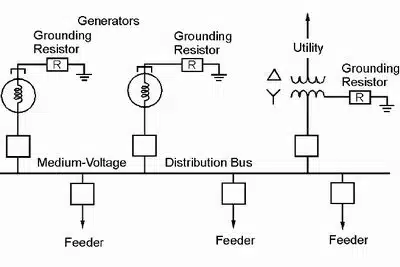Last edit: 03/08/2023

Many existing and new industrial facilities include multiple generators operating on plant distribution buses at the medium-voltage level. The fault type to which stator windings are most often subjected is a short circuit to ground.
Many incidents of severe damage to bus-connected generators from stator ground faults have been reported in recent years. It has been recognized by recent studies that the generator damage is caused more by the ground fault current contribution from the generator itself than from the system.
The significant increase in such incidents has alerted users and insurers. Also, multiple grounding of sources will
result in very high fault currents causing severe damage and coordination problems. Therefore, special attention must be given to generator grounding and ground fault protection.
It should be noted that the method of ground fault protection is directly related to the method of system grounding used. There are many decisions, considerations and alternatives that should be carefully examined while designing an adequate and reliable grounding system for increasing personnel safety, minimizing equipment damage and avoiding unwanted interruptions in plant operation.
There are a few methods for Neutral Grounding like High Resistance, Low Resistance or even ungrouding. That depends upon the installation that is used in the plant where the new generator is insttalled. The same issue applies for the choice of the type of protection to be used: 51G, 51N, 59G, 87G etc…
GT Engineering can support you in all aspects of neutral grounding and the best choice of the type of Groung Fault Protection.